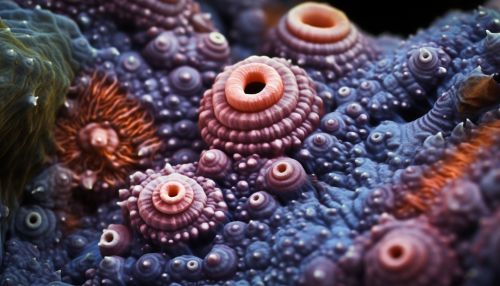Helminth Immunology and Host Defense
Introduction
Helminths, or parasitic worms, are a diverse group of organisms that can cause significant health problems in humans and animals. The study of the immune response to these parasites, known as helminth immunology, is a crucial area of research in the field of immunology. This article will delve into the complex interactions between helminths and their hosts, focusing on the host's defense mechanisms.


Helminth Immunology
Helminth immunology is an area of study that focuses on the immune response to parasitic worm infections. It involves the study of both the innate and adaptive immune responses, and how these responses can either help to control the infection or contribute to disease pathology.
Innate Immune Response
The innate immune system is the first line of defense against helminth infections. This system includes physical barriers such as the skin and mucous membranes, as well as immune cells like neutrophils, macrophages, and dendritic cells. These cells can recognize and respond to helminths through pattern recognition receptors (PRRs), which detect pathogen-associated molecular patterns (PAMPs) on the surface of the parasites.
Adaptive Immune Response
The adaptive immune system is activated if the innate immune response is unable to control the infection. This system involves T cells and B cells, which can recognize specific antigens on the helminths. The adaptive immune response to helminths is typically characterized by a Th2 response, involving the production of cytokines such as IL-4, IL-5, and IL-13, which promote the activation and recruitment of eosinophils, mast cells, and basophils.
Host Defense Mechanisms
The host defense against helminths involves a complex interplay of immune responses, which can vary depending on the type of helminth and the stage of infection.
Physical and Chemical Barriers
The skin and mucous membranes serve as physical barriers to helminth infection. In addition, the host can produce various chemical mediators, such as antimicrobial peptides and reactive oxygen species, which can directly kill the parasites or inhibit their growth.
Cellular Responses
Upon infection, immune cells are recruited to the site of infection where they can directly kill the parasites or produce cytokines that help to control the infection. Eosinophils, for example, are particularly important in the defense against helminths. These cells can release cytotoxic granules that can kill the parasites.
Humoral Responses
The humoral response, mediated by B cells and their production of antibodies, is another crucial aspect of the host defense against helminths. Antibodies can bind to the parasites, marking them for destruction by immune cells, or they can block the parasites' ability to invade host tissues.
Challenges in Helminth Immunology
Despite the host's robust immune response, helminths are often able to establish chronic infections. This is due, in part, to the parasites' ability to modulate the host's immune response. For example, helminths can secrete molecules that inhibit the function of immune cells or skew the immune response towards a less effective Th2 response.
Future Directions
Understanding the complex interactions between helminths and the host's immune system is crucial for the development of new treatments and vaccines for helminth infections. Future research in helminth immunology will likely focus on identifying the molecular mechanisms by which helminths modulate the host's immune response, and how these mechanisms can be targeted to enhance the host's defense against these parasites.
